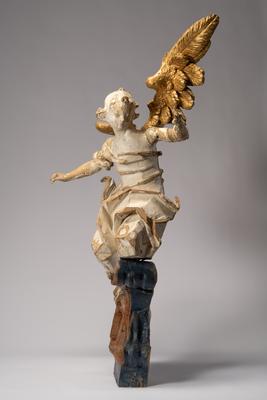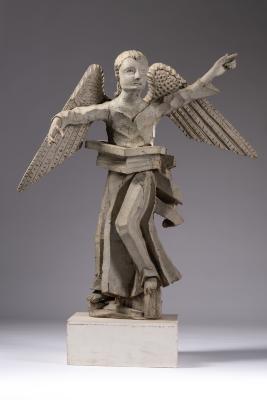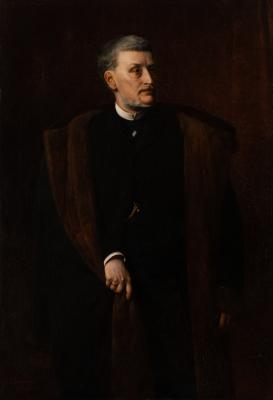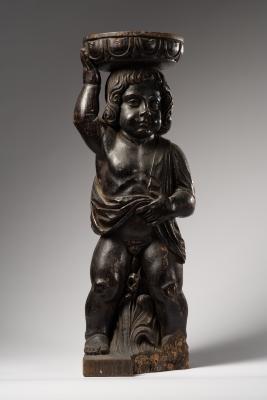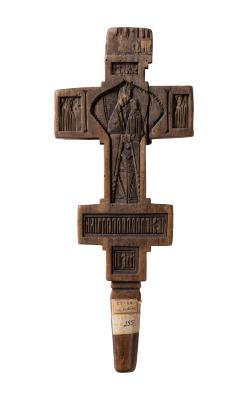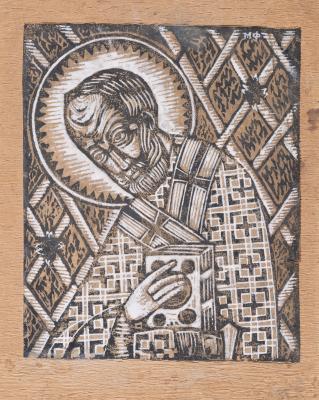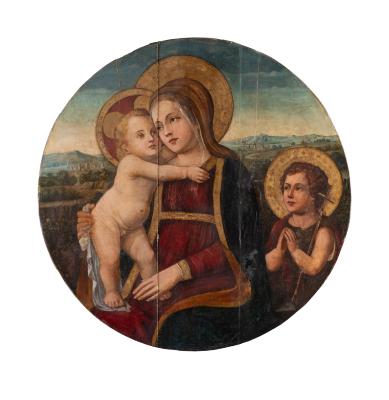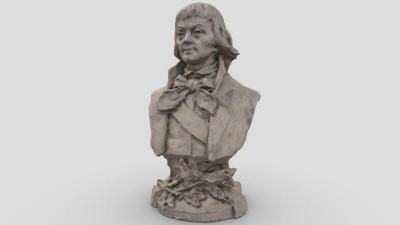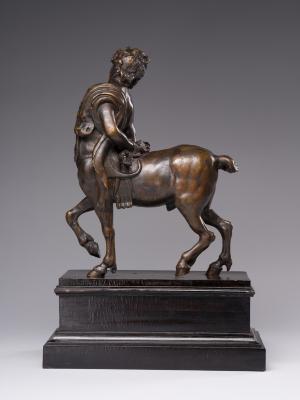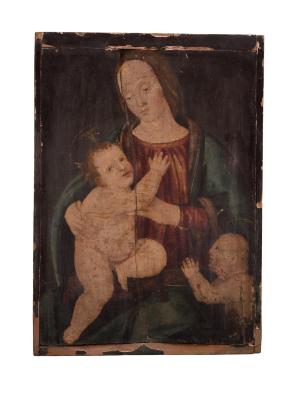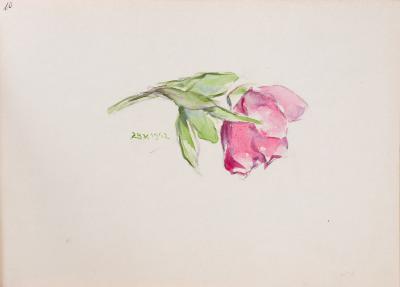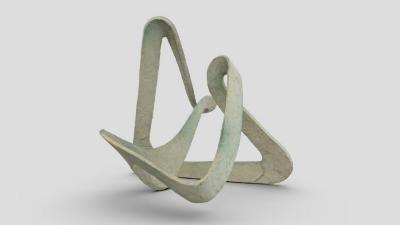The first version of the composition by B. Pinelli, titled La Carità dei Frati, literally The Mercy of the Capuchin Friars, was issued in the album Raccolta di Cinquanta Costumi Pittoreschi (Collection of Fifty Picturesque Costumes), published in 1809. In that composition, the architectural elements documenting the entrance gate of a specific monastery in Rome were performed in detail. The engraving of 1809 was replicated in the album Pittoreskes Italien, published in 1840 in Leipzig. The work presented in the Lviv collection in a slightly modified version has been known since 1816 from the album Nuova Raccolta di Cinquanta Costumi Pittoreschi incisi di acqua forte (New Collection of Fifty Picturesque Costumes). The engraving depicts a Capuchin monk standing on the threshold before the monastery's gate, pouring hot soup from a jug for the poor and infirm, including vagabonds, cripples, and mothers with children. The simple and fast drawing is performed with contrasting watercolours; the artist used brown and light grey colours in addition to bright ones such as yellow, red, and blue tones.
Capuchin Monks or The Order of Friars Minor Capuchin (Ordo Fratrum Minorum Capucinorum) is a Catholic order that separated from the Franciscans in the 16th century. The Capuchins were characterized by charity and asceticism. Their clothing consisted of a brown soutane with a hood sewn to it, a rope with a knot on the belt (a symbol of the inviolability of vows), and sandals worn on their bare feet.







